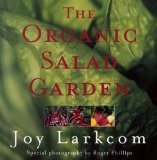
Vegetable, Fruit, and Herb Gardening in June
Encourage children to join you in the garden by planting seeds that provide quick results. Radishes germinate within 2 or 3 days and mature in a few weeks.
Marigolds go from seedlings to flowering plants in less than a month. Or, plant a "zoo" of snapdragons, lamb's ears, foxglove, catnip, and toad flax.
Sit and look at your vegetable garden, think ahead to what it will look like after you have pulled out the spent pea plants and the green beans after they have gone to seed.
Plant annuals that will fill in bare spots that happen after all your harvesting. Even if your vegetable garden is full now, plan ahead for fall harvests by spreading annual seeds now to fill in later.
- Place the bottom half of plastic milk containers turned upside down and plastic tubs turned upside down beneath melons.
Keeping the melons from touching the soil will prevent fungal problems and rot.
- If the birds are eating more of your strawberries than you are, use a row cover to protect them.
- Treat blight on tomatoes with 4 teaspoons of baking soda plus a teaspoon of veggie oil per gallon of water. Spray on plants routinely for 2 weeks.
- Set out beer cups for snails, slugs and pill bugs or spread human and pet hair around the base of plants.
Sprinkle crushed red pepper around the garden once a week for a month and then once every month to eliminate pill bugs and keep them from returning.
- Stop cutting asparagus when the spears become thinner than the diameter of a pencil. After the last cut is made, fertilize the bed. Allow the tops
to grow during the summer to store food in the roots for next year's crop.
- It's finally warm enough in coastal areas to plant warm- season vegetables such as tomatoes, sweet corn, cucumbers, squash, eggplant, and peppers and
herbs such as basil and cilantro. To get the quickest, most productive crop, plant in well-draining soil in the sunniest spot possible.
- Bacillus thuringiensis is safe to use on cole crops against the imported cabbage worm. Use according to label directions. A spreader-sticker is needed
to keep Bt on the leaves.
- You can make whitefly traps by spreading a thin coat of 90 SAE motor oil on yellow poster board squares. Mount the cardboard traps on sticks and place
them at blossom height.
- Most herbs need no fertilizer and little water, so water only during prolonged dry spells. Avoid mulching herbs as mulch keeps
the soil too moist. If fungus develops on your herbs during wetweather, cut them back to encourage healthy new growth.
- Comfrey improves soil as it grows! Dwarf English comfrey is especially good. The plants have thick, deep roots that are able
to penetrate 6 to 10 feet down, breaking up the worst soils. For a very adaptable ground cover that is vigorous in spreading, try
St. John's wort or Aaron's Beard. It has striking yellow flowers, will live in dry soil, and needs little or no care.
- Many herb plants thrive in soils with widely varying pH levels.
Rosemary (Rosmarinus officinalis) and common oregano (Origanum vulgare) are well adapted to pH levels between 4.5 and 8.7.
Horehound (Marrubium vulgare) withstands a range of 4.5 to 8.4
and mint (Mentha spicata) 4.5 to 7.5.
- Chervil matures in six weeks and grows best when planted in light shade. Make successive plantings if you want to harvest it all summer.
- The best time to harvest most herbs is just before flowering, when the leaves contain the maximum essential oils. Cut herbs early on a sunny day.
"The trouble with gardening is that is does not remain an avocation. It becomes an obsession."
-- Phyllis McGinley

FREE Garden Journal!!
Join "Garden Notes" and plan for Harvest Success as you track and record your gardening progress.
Your Free Personal Garden Journal has pages for jotting down notes on the seeds you start,
your new plantings, when you fertilized, and even a graph to plot a new garden.

FREE Report
If you're interested in growing tomatoes, you've got to read this free report, because you're about to find out
3 age-old, tried and tested, organic tomato growing secrets that turn any tomato plant into a thriving source of the
juiciest, most
mouth-watering tomatoes you've ever tasted.
I didn't want to see another internet "eBook" on growing anything, but my husband signed up for Kacper's free report and I have to tell you, it is WELL worth the read. If you think you know everything about growing tomatoes, I challenge you to read Kacper's report. HIGHLY recommended!
Free Report Here

What's New?
Discover How To Easily Build An Attractive And Affordable Greenhouse That Will Grow Anything In Any Conditions… Also, building your own greenhouse just makes economical sense. You can build a greenhouse at just a fraction of the cost of buying a pre-built one. Most pre-built greenhouse you buy need to be assembled anyway, you’re really just paying hugely inflated prices for the material.
Click Here!
Book of the Month

Based entirely on organic gardening principles. This says it all. Joy's book has been fully revised and updated and includes extensive new reading, particularly
on oriental and fruiting vegetables, and did I mention, is now entirely based on organic gardening practices.
Read More...






